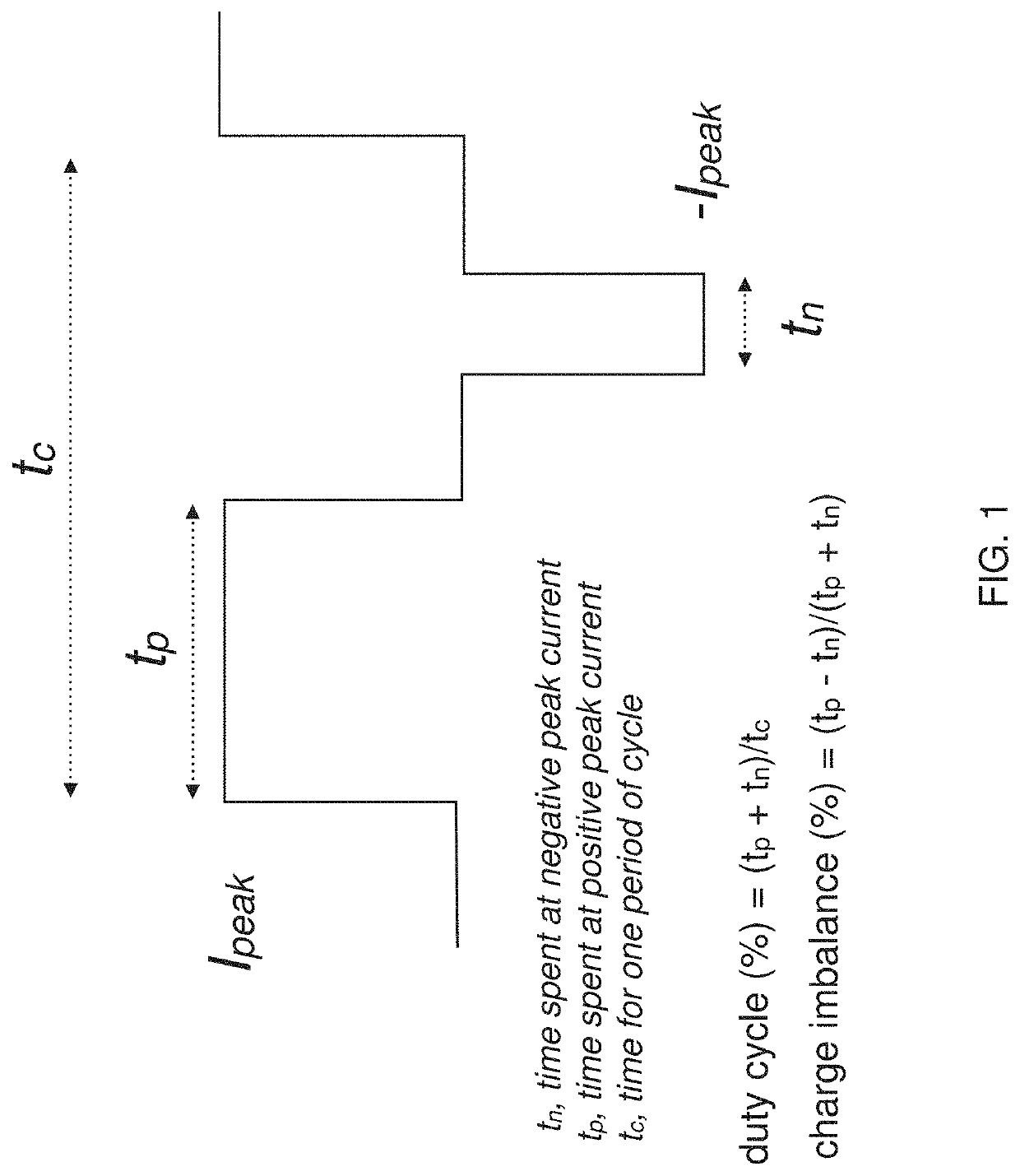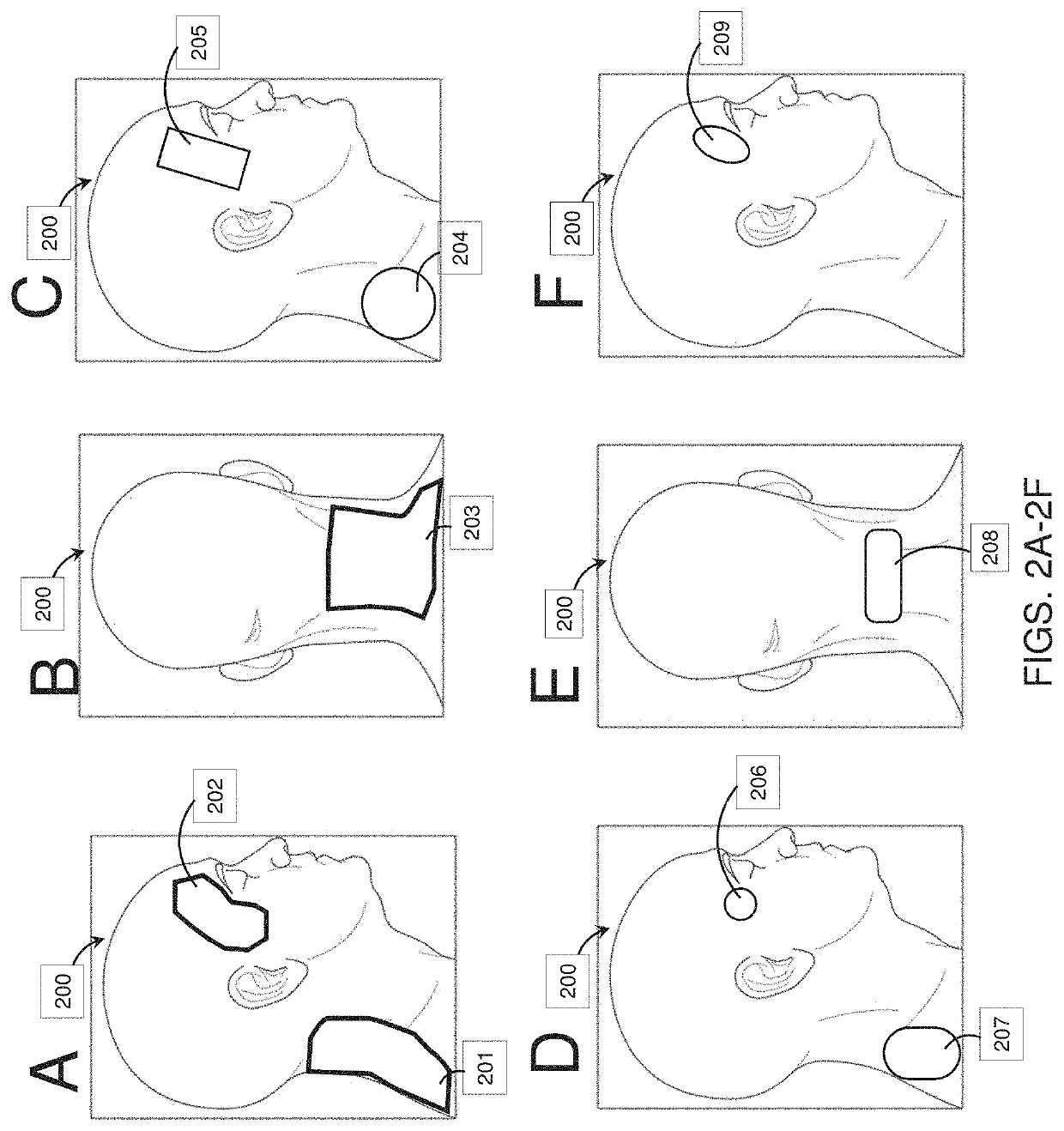Systems and methods for applying electrical energy to treat psoriasis
a technology of electrical energy and psoriasis, applied in the field of noninvasive neuromodulation to treat a disorder, can solve the problems of difficult treatment of psoriasis, limited effectiveness of available psoriasis treatment in many patients, and increased stress in psoriatic patients, so as to reduce the symptoms of inflammatory and/or skin disorders and reduce the sympathetic tone
- Summary
- Abstract
- Description
- Claims
- Application Information
AI Technical Summary
Benefits of technology
Problems solved by technology
Method used
Image
Examples
examples
[0186]Subject's having psoriasis (e.g., having a Psoriasis Area and Severity Index, or PASI score indicating mild to severe psoriasis) were treated as described herein. Improvement were generally seen in patient's treating for 3 or more times per week (e.g., treating daily or every-other day for at least 10 minutes per treatment), with greater improvement seen with daily and >10 min / day usage. It typically took between 7-10 days for improvements to being to manifest, where the improvements included a reduction in itchiness, area affected and overall skin quality. Thus, methods of treating a patient as described herein may include treating at least once every 48-60 hours for at least 10 minutes in any of the waveforms described herein (see, e.g., FIGS. 7-9), where the treatment continued for at least one week (e.g., at least two weeks, at least three weeks, at least four weeks, etc.).
[0187]The methods and apparatuses described herein, including the use of the neurostimulators and wav...
example 2
[0200]FIGS. 19-23 illustrate the results of a pilot study using N=18 treatment patients and N=10 control patients that had severe, moderate, or mild plaque psoriasis. Subjects used neurostimulation as described herein (e.g., using a waveform regimen similar to that shown in FIG. 29, for treatment, or 30, for sham control). Stimulation was applied 1× daily for at least 10 minutes, and weekly surveys and photographs were used to record data. Survey data indicated reported improvement in appearance (redness / scaling), itchiness, and anxiety levels. Overall, significant improvement was measured as greater than or equal to 50% improvement in appearance after 4 weeks. 90% of the subjects used topical treatments (in both groups) to treat.
[0201]As shown in FIG. 19, 15 of the 18 patients in the treatment group had a 50% or greater improvement after 4 weeks. 6 of the 18 had a 75% or more improvement after 4 weeks. This was highly significant, compared to sham control. FIGS. 20-21 show where in...
example 3
[0202]In another example, a neck-worn apparatus, such as shown in FIGS. 31A-34B may be used to treat an autoimmune disorder, such as psoriasis. For example, the apparatuses and methods described herein may be intended for patients with moderate to severe plaque psoriasis who are candidates for phototherapy or systemic therapy. In general these neurostimulation apparatuses, including the system shown in FIGS. 31A-34B may be a portable (wearable), battery-powered, electrical neuromodulation device configured to provide a systemic treatment for moderate-to-severe psoriasis. The device may deliver a pre-programmed low-intensity, non-invasive neuromodulation electrical stimulus to the base of the neck and may be used with an accompanying software (e.g., application user interface or “app”) on a portable device, such as a smartphone. In some variations the system may include a soft neckband having attachment points for one or more disposable gel electrode assemblies (e.g., “gel pads”) to ...
PUM
 Login to View More
Login to View More Abstract
Description
Claims
Application Information
 Login to View More
Login to View More - R&D
- Intellectual Property
- Life Sciences
- Materials
- Tech Scout
- Unparalleled Data Quality
- Higher Quality Content
- 60% Fewer Hallucinations
Browse by: Latest US Patents, China's latest patents, Technical Efficacy Thesaurus, Application Domain, Technology Topic, Popular Technical Reports.
© 2025 PatSnap. All rights reserved.Legal|Privacy policy|Modern Slavery Act Transparency Statement|Sitemap|About US| Contact US: help@patsnap.com



